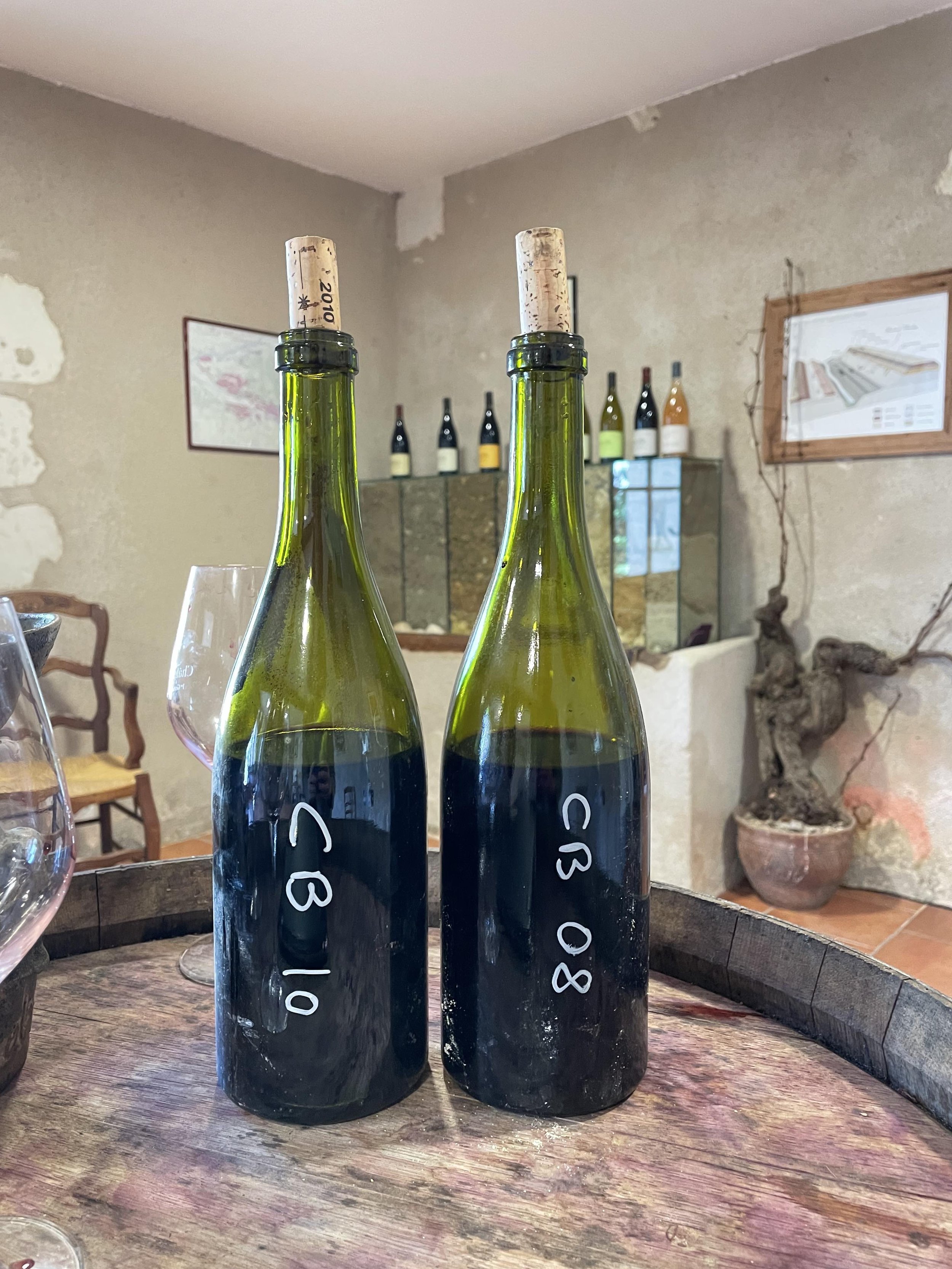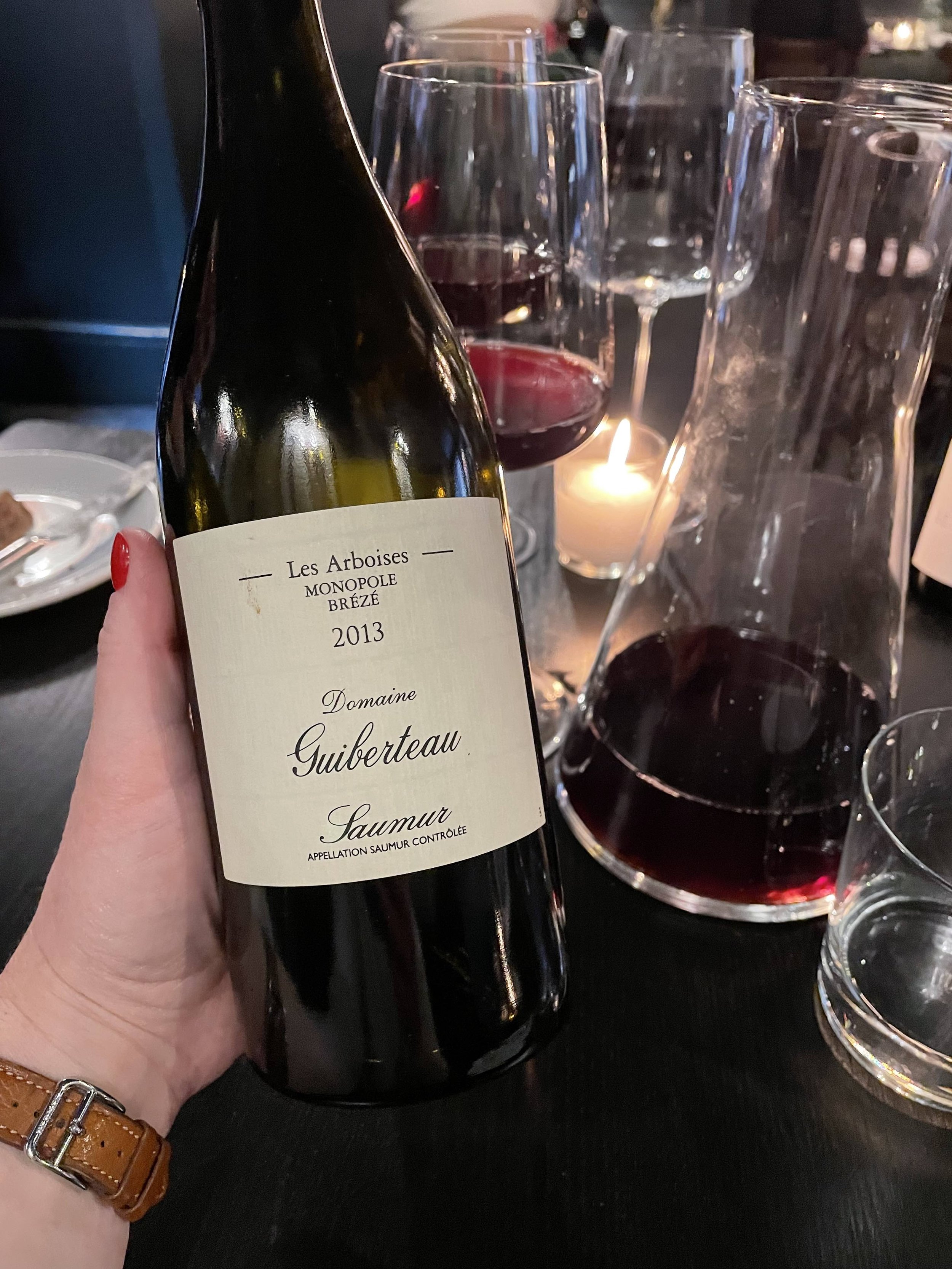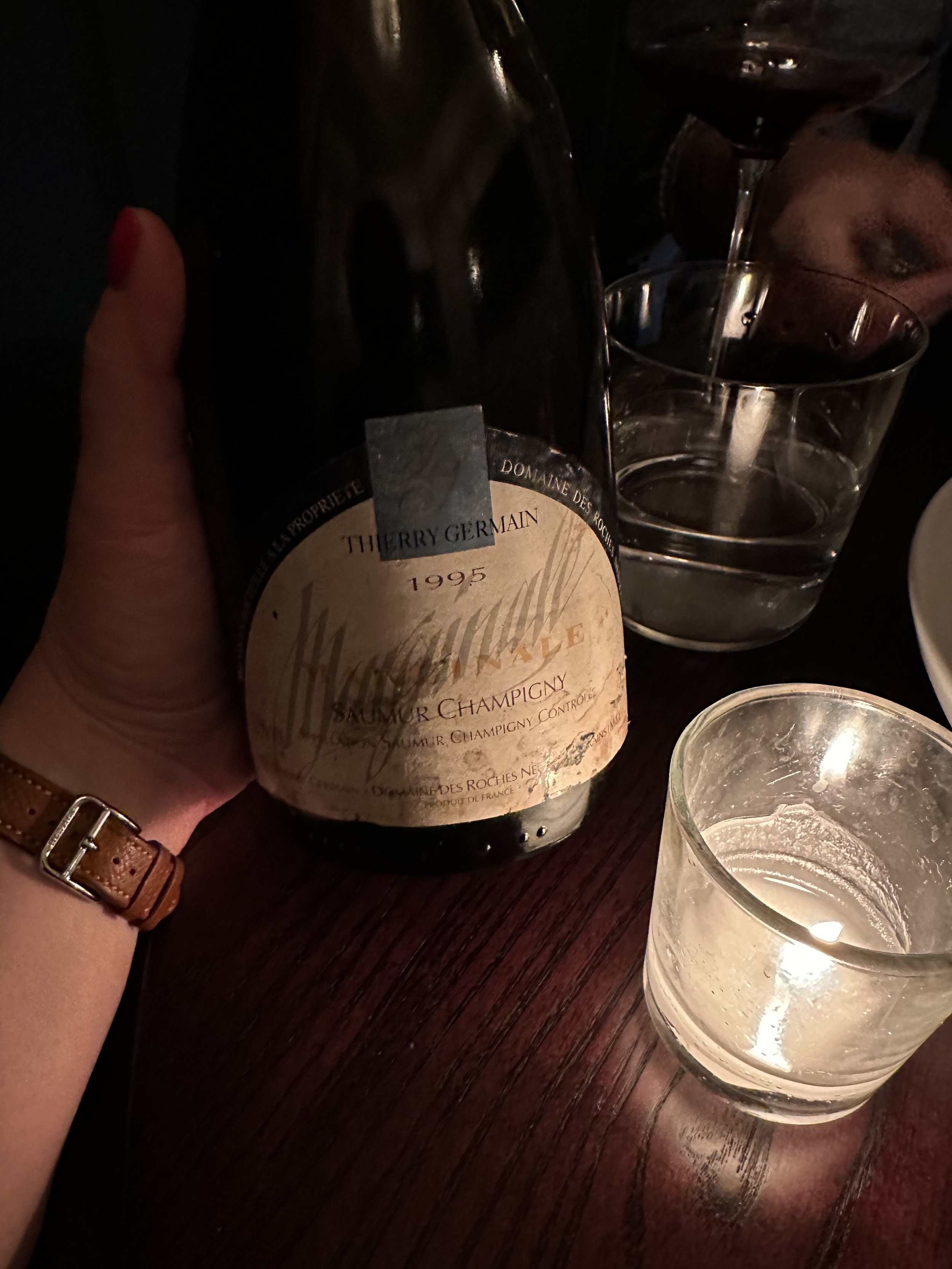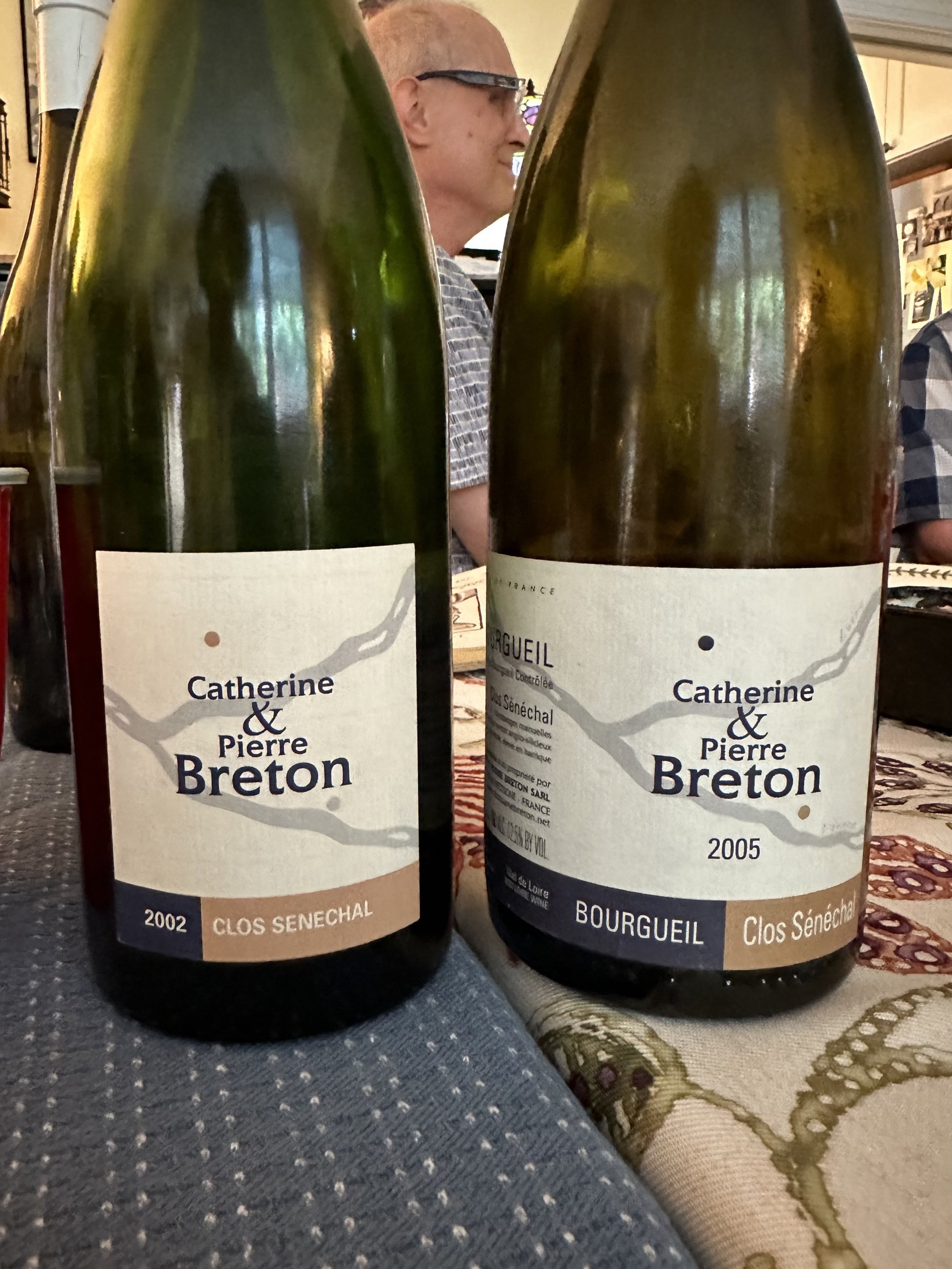Age-Worthy Loire Valley Cabernet Franc and the Myth of the “Great” Vintage
In a recent video, I mentioned a phrase that I say from time to time, but I didn't take the time to elaborate on it: "vigneron and vineyard trump vintage."
That is to say, when an exceptional vigneron is working with a high quality site/vineyard for Cabernet Franc, vintage is not something I concern myself with as it relates to the inherent quality of the finished wine. In my opinion, a wine of very good quality will be produced from these top sites in the hands of a top vigneron in ANY vintage, and vintage is a tool for understanding how and when we should be enjoying that wine.
A perfect example would be Olga Raffault's bottling from the great Les Picasses lieu-dit in Chinon. This is likely the Loire Cabernet Franc that I've had the most experience with in terms of diversity of vintages and stages of evolution. I've had this wine from cooler vintages, "classic" vintages, warm vintages; I've had it very young and with decades of age. This wine is always exceptional. While I derive much pleasure from trying it in all of these scenarios, it is really one of the great Loire Cabernet Francs that can age well and gain a lot of complexity over time, and it is a thrill to enjoy it with some age.
If you have not had a lot of experience with structured examples of Loire Valley Cabernet Franc (like Olga Raffault’s Les Picasses) with a little bit of age, let me try and provides some general insights. (Of course, these observations vary widely from wine to wine, and depend on vineyard, vintage, vigneron, and how the wine was stored.)
From seven to ten years from vintage date, usually the fruit profile in these wines is still quite primarily (this can be red or dark fruits, or a combination, depending on the wine), herbal notes (herbs, moss, evergreen trees/shrubs) are still fresh but beginning to present dried notes, hints of earth begin to emerge, such as beetroot, fresh turned potting soil and cured tobacco, sometimes notes of chocolate/cocoa, liquorice, and graphite appear.
With fifteen to twenty years of age, fruits begin to lean into the dried spectrum, more enchanting earth tones appear such as dried herbs (thyme, rosemary, mint), potpourri or desiccated violets, “forest floor,” mushroom (oyster, chanterelle), olive, and in some wines the spice profile (usually a varietal characteristic rather than from oak) becomes more pronounced. Mineral notes can appear such as crushed rocks, chalk, and wet stones.
With twenty-five to thirty years of age, these wines can become quite fragrant, perfumed, very savoury and autumnal in nature. Fruit aromas tend to take a back seat to dried herbal and floral notes, and the tertiary and earthy elements continue to build on what I noted above with additional elements such as damp or dried autumn leaves, cigar box, and rooibos or darjeeling tea. Occasionally, in some examples, I get compelling fruit and spice notes that seem almost exotic like dried green fig, blood orange juice, dried or candied orange peel, sandalwood, and Sichuan peppercorn,
In terms of the wine’s structure, over time the wine’s acidity, tannin and fruit become more integrated and align in a way that makes the wine feel completely seamless on the palate. With time, some examples that present more fleshy and round in their youth will lose that baby fat and will develop more definition, while other examples that show more lean and fine-boned in the beginning can “fill out” in a way that feels more complete and in line with the other structural elements in the wine.
Over the last few decades, we have begun to see several top vigneron-vineyard combinations emerge from across all Loire Cabernet Franc appellations as benchmarks for excellent examples of age-worthy, structured Cabernet Franc. Perhaps unsurprisingly, many of these historically high quality sites would be considered "warm" sites, with favourable exposures that promote ripening and usually with the influence of the Turonian tuffeau chalk.
In recent years, with the changing climate, we have seen a string of warmer vintages - 2018, 2020, 2022 - and now some very good vineyards that would've once been considered "cool" are beginning to show how well they perform in these warmer conditions. (Of course, it has to be said that improvements in viticultural techniques and a better understanding of vine balance must also be attributed to the emergence of more high quality examples of Cabernet Franc we are seeing come from these sites.)
So, what does all of this mean for lovers of Loire Valley Cabernet Franc? Simply put, the future is bright, my friends! We are entering the golden age for Loire Cabernet Franc!
What is worth contemplation, however, is how and when we should enjoy these age-worthy wines from the hands of these elite vignerons. The wines from these famed, historically "warm" sites in warmer vintages will generally mature faster and be ready to drink sooner, whereas these "cooler" sites in more classic vintages will typically take a little longer to open up and show their true colours. (I recognize that this is a gross simplification, and there is certainly nuance here from site to site and stylistic differences from vigneron to vigneron, but this gives us a framework to build on.) Moreover, with rising ripeness levels and alcohols (as a great friend pointed out to me recently), our choice of food pairings for these wines from these different sites/vignerons/vintages will also evolve, diversify and require additional consideration. Regardless of the site, vigneron and vintage, these top, age-worthy Cabernet Francs are serious wines that age gracefully, gain complexity over time and are worthy of exploration.
This idea of a "great" vintage is a myth that needs to be dispelled. Everyone's journey with wine is unique to them, and we are not all at the same point along that journey when we enjoy a particular wine. How a wine tastes and is experienced is purely subjective. A wine from a "great" vintage may be considered great to some, but not to others. Furthermore, a wine’s “greatness” is influenced by when that bottle was opened, how it was served and with what, and the company with whom the wine is shared. Beauty is in the eye of the beholder. Every vintage has something to give, something to show us, something to teach us.
Among my goals when I launched this project was to help guide the enjoyment and appreciation of Cabernet Franc for consumers and professionals alike, wherever they are at on their wine journey. The more I learn and taste, it is becoming ever more apparent how diverse Loire Valley Cabernet Franc is and how much there is to discover. And for those who like to cellar their Loire Cabernet Francs and appreciate the beauty that aged Cabernet Franc can exhibit, with time, as my understanding of these great vigneron-vineyard combinations deepens, I will be able to offer up better recommendations on drinking windows, food pairings, etc. to enhance the pleasure you derive from these very special wines.














